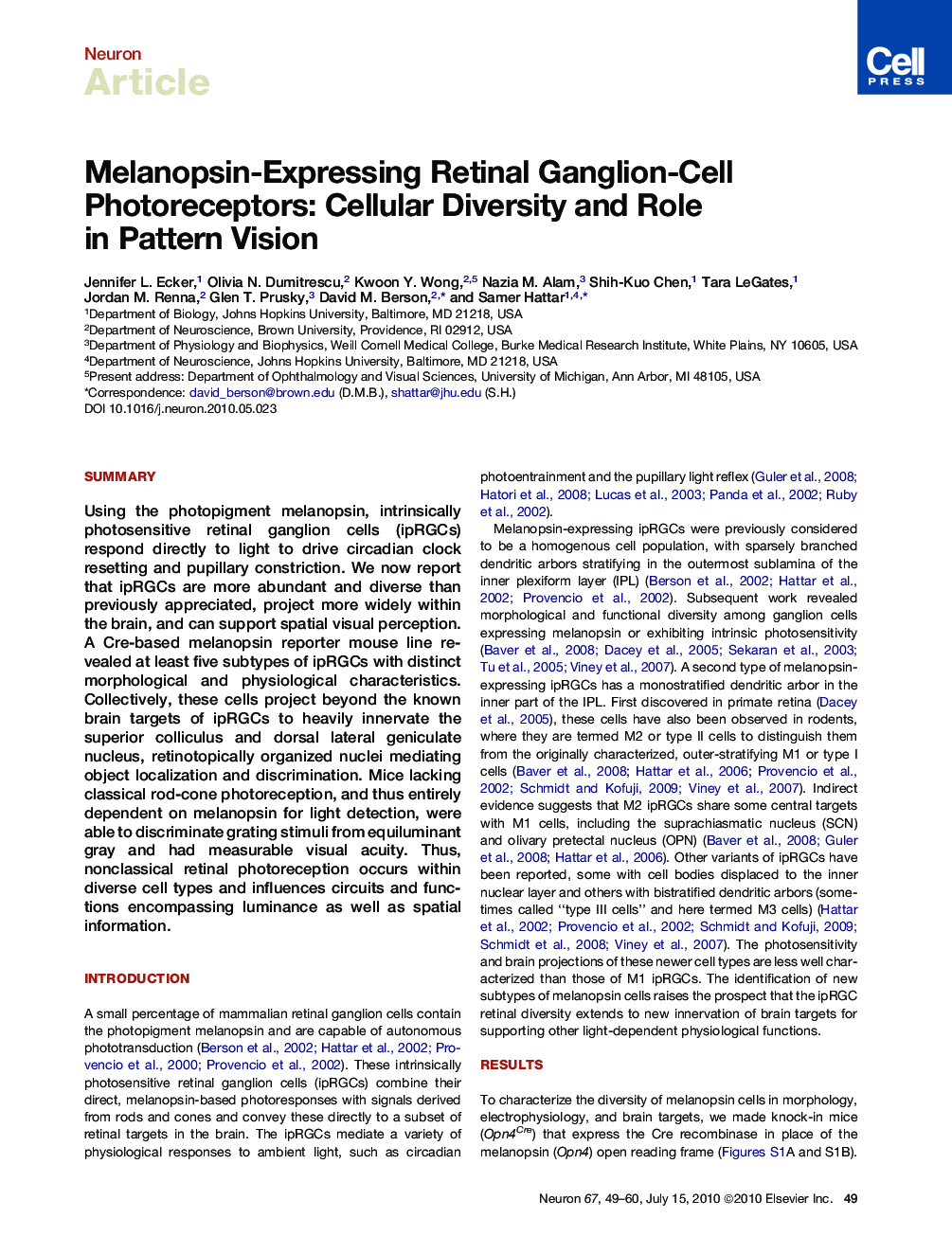| Article ID | Journal | Published Year | Pages | File Type |
|---|---|---|---|---|
| 4321875 | Neuron | 2010 | 12 Pages |
SummaryUsing the photopigment melanopsin, intrinsically photosensitive retinal ganglion cells (ipRGCs) respond directly to light to drive circadian clock resetting and pupillary constriction. We now report that ipRGCs are more abundant and diverse than previously appreciated, project more widely within the brain, and can support spatial visual perception. A Cre-based melanopsin reporter mouse line revealed at least five subtypes of ipRGCs with distinct morphological and physiological characteristics. Collectively, these cells project beyond the known brain targets of ipRGCs to heavily innervate the superior colliculus and dorsal lateral geniculate nucleus, retinotopically organized nuclei mediating object localization and discrimination. Mice lacking classical rod-cone photoreception, and thus entirely dependent on melanopsin for light detection, were able to discriminate grating stimuli from equiluminant gray and had measurable visual acuity. Thus, nonclassical retinal photoreception occurs within diverse cell types and influences circuits and functions encompassing luminance as well as spatial information.
► ipRGCs comprise at least five distinct subtypes ► ipRGCs project to wide array of targets including areas important for image formation ► melanopsin-based phototransduction supports pattern discrimination ► M1 ipRGCs exclusively innervate the shell of the OPN, providing the sole drive to PLR
